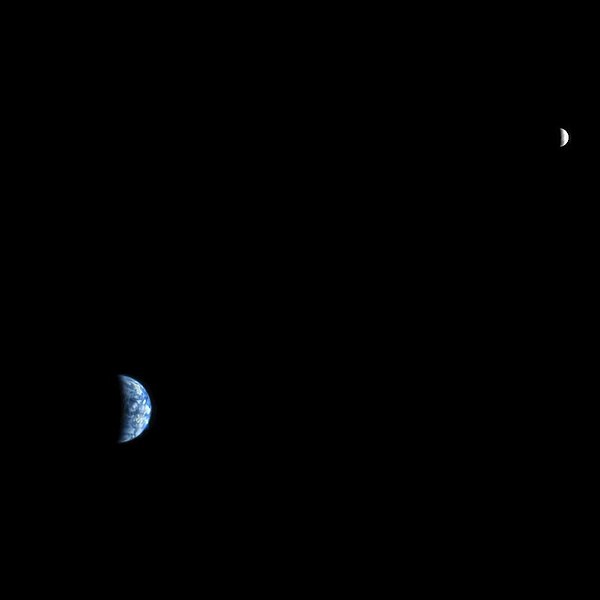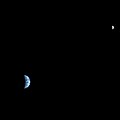Fail:The Earth and the Moon photographed from Mars orbit.jpg

Selle eelvaate suurus: 600 × 600 pikslit. Teised eraldusvõimed: 240 × 240 pikslit | 480 × 480 pikslit.
Algfail (800 × 800 pikslit, faili suurus: 9 KB, MIME tüüp: image/jpeg)
Faili ajalugu
Klõpsa kuupäeva ja kellaaega, et näha sel ajahetkel kasutusel olnud failiversiooni.
| Kuupäev/kellaaeg | Pisipilt | Mõõtmed | Kasutaja | Kommentaar | |
|---|---|---|---|---|---|
| viimane | 12. aprill 2008, kell 22:43 |  | 800 × 800 (9 KB) | Njardarlogar | {{Information |Description= Original caption: The High Resolution Imaging Science Experiment (HiRISE) camera would make a great backyard telescope for viewing Mars, and we can also use it at Mars to view other planets. This is an image of Earth and the mo |
Faili kasutus
Seda faili kasutab järgmine lehekülg:
Globaalne failikasutus
Järgmised muud vikid kasutavad seda faili:
- Faili kasutus vikis ar.wikipedia.org
- Faili kasutus vikis be.wikipedia.org
- Faili kasutus vikis bg.wikipedia.org
- Faili kasutus vikis bo.wikipedia.org
- Faili kasutus vikis ca.wikipedia.org
- Faili kasutus vikis cv.wikipedia.org
- Faili kasutus vikis el.wikipedia.org
- Faili kasutus vikis en.wikipedia.org
- Faili kasutus vikis en.wikiversity.org
- Faili kasutus vikis es.wikipedia.org
- Faili kasutus vikis fa.wikipedia.org
- Faili kasutus vikis fr.wikipedia.org
- Faili kasutus vikis gl.wikipedia.org
- Faili kasutus vikis id.wikipedia.org
- Faili kasutus vikis incubator.wikimedia.org
- Faili kasutus vikis it.wikipedia.org
- Faili kasutus vikis ja.wikipedia.org
- Faili kasutus vikis ko.wikipedia.org
- Faili kasutus vikis la.wikipedia.org
- Faili kasutus vikis lt.wikipedia.org
- Faili kasutus vikis nl.wikipedia.org
- Faili kasutus vikis nn.wikipedia.org
- Faili kasutus vikis no.wikipedia.org
- Faili kasutus vikis pl.wikipedia.org
- Faili kasutus vikis pms.wikipedia.org
- Faili kasutus vikis pt.wikipedia.org
- Faili kasutus vikis ru.wikipedia.org
- Faili kasutus vikis tr.wikipedia.org
- Faili kasutus vikis tt.wikipedia.org
- Faili kasutus vikis uk.wikipedia.org
- Faili kasutus vikis zh.wikipedia.org


